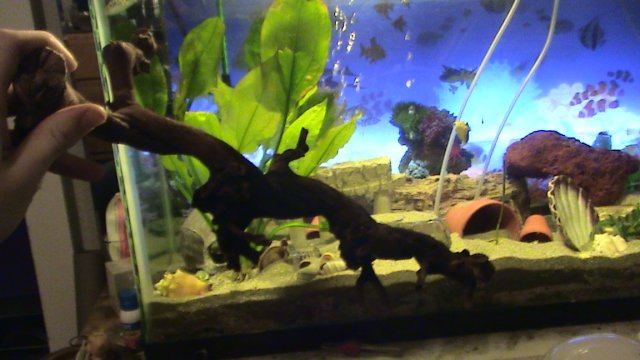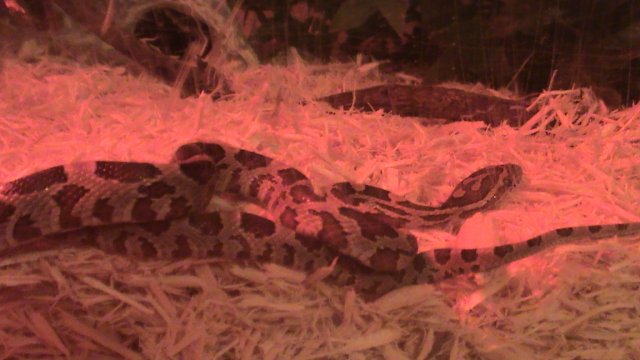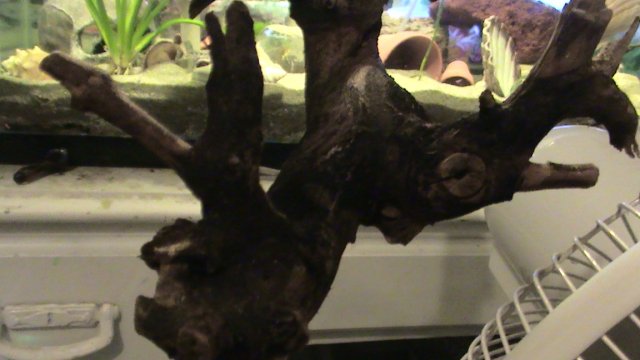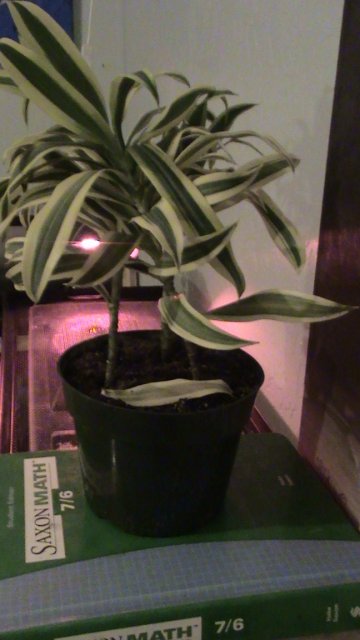very rare, if ever on the fish... agreed. frogs... check the species and the supply. it may not pay to get them from a good supply unless you happen to enjoy them enough to keep them and they happen to breed. then there's parasites and other things to tend with if you get them cheap or wild.
that wood should be fine for shedding for now... but not for a hide. snakes like to tuck themselves in... and be hidden. they also tend to like something on their back side when they're tucked in.
a deep substrate to burrow and hide is essential for a corn snake. something thick enough to guard from burns below that is important too unless you're heating a room or using a rack system correctly. i like coco fiber and sand mixed for 1.5" to 2".
definitely no heat rocks.
snakes do need belly heat though... especially constrictors. in the wild they'd be on something large that takes heat in well so the sun is more than efficient to keep it warm while they bask. or they'd be underground or brush enjoying the ambient warmth of the earth. either way, belly warmth. it's important for digestion.
i keep my room pretty cool so i have a ceramic heat emmitter, uth pads and heat rope on my redtail's tank. i control the heat rope with a lamp dimmer and everything else with a thermostat (the reptitherm 500). the ability to do a little more than you need and cut it back when necessary is very beneficial. set it and forget it is nice too. he gets light with a full spectrum cfl. you could set your belly temp and use a regular incandescent for a hot spot during the day and cut it off at night for a night drop too if you'd like. just try to keep within temp range. a reptile night light often will interrupt a plants growth so be careful of that. the full spectrum bulb will provide good daylight for your plant too so that kinda sways me more toward uth and ceramic emitters for heat imo. don't buy a single bulb at the pet store... avoid that place as much as possible...
http://www.vivariumforum.com/community/terra-general/4322-good-places-buy-please-add.html a red light is just a red light for example... get them at walmart.
feeding in a box is an option but there are others too. a welding glove or decent leather one, long sleeve sweatshirt and a snake hook are nice to have anyway if you ever feel it gets to that.
corn snakes aren't known for refusing a meal. i'd assume it'll be eating within a couple weeks regardless although it should be once or twice a week until it's an adult but it is that time of year for them to gestate. if it does i wouldn't attempt to feed it unless you find it actively searching for food or you're sure of your temps and are willing to jump through hoops with tricks or force it. feeding never more than 3 times head size at the widest part is essential. best to go about the the size of the widest part of the body for good measure. remember feeding a cold snake can be a death sentence because it won't digest and pass through. it'll rot and in turn rot the snake from inside out.
i wouldn't do grasses or turf... i'd do brush... it's where they live, what they like, stick with it. the aspen isn't the worst choice but i do like coconut croutons from the hydroponics store. they are very light, fluffy, absorbent and natural looking. perfect for burrowing in and pleasing to the eye. 3" to 6" should be plenty to burrow in.
here's some good info on them...
http://nationalzoo.si.edu/Animals/ReptilesAmphibians/Facts/FactSheets/Cornsnake.cfm
the enclosure requirements are small. as usual the substrates considered are narrowed down to what can be found at a lps. there are more options for heat than mentioned ex: flexwatt. corns won't typically have to eat at night unless there's not enough cover. they're diurnal. other than that this is a good care sheet...
http://www.reptilehabitat.com/corn_snake_care_sheet.htm
it's hard to find good care sheets on corns imo amazingly enough.
getting some fake plants from the hobby/crafts shop and hanging some on the back wall and placing or mounting some across the bottom back will provide some more comfort for the little guy and cover the back wall giving it a nice natural look. he might come out more often too that way.
using foil tape on any under tank heaters also have a bunch of benefits.
they'll climb for food whenever they're hungry so whatever they can climb on that fits and still leaves plenty of room for burrowing, hides, waterbowl and some fake plants for cover would be perfect.
lock that lid on tight... they're escape artists!
that plant should be fine... you could plant the whole tank if you were careful to leave plenty of hiding space. he'll probably get big enough to destroy it though. if you could find something strong and small enough to fit you could use organic soil, peat and cocofiber and cover with lots of leaf litter or loose light bark type like aspen or croutons for burrowing. i'd still keep the bottom warm a bit though and you wouldn't want anything that needs a wet soil as well as some aeration (maybe in the lid) might be necessary to bring in nice dry air to compensate for the moist soil.
 also wondering if anyone has suggestions on what i should put in the tank? as in like suggestions not just "oh hiding spaces, and branches" i have both but i mean form people who have or do own some know what they enjoy?
also wondering if anyone has suggestions on what i should put in the tank? as in like suggestions not just "oh hiding spaces, and branches" i have both but i mean form people who have or do own some know what they enjoy?












